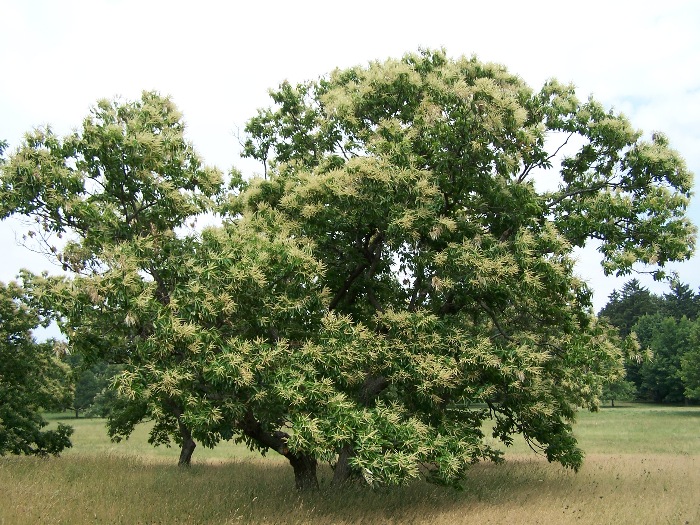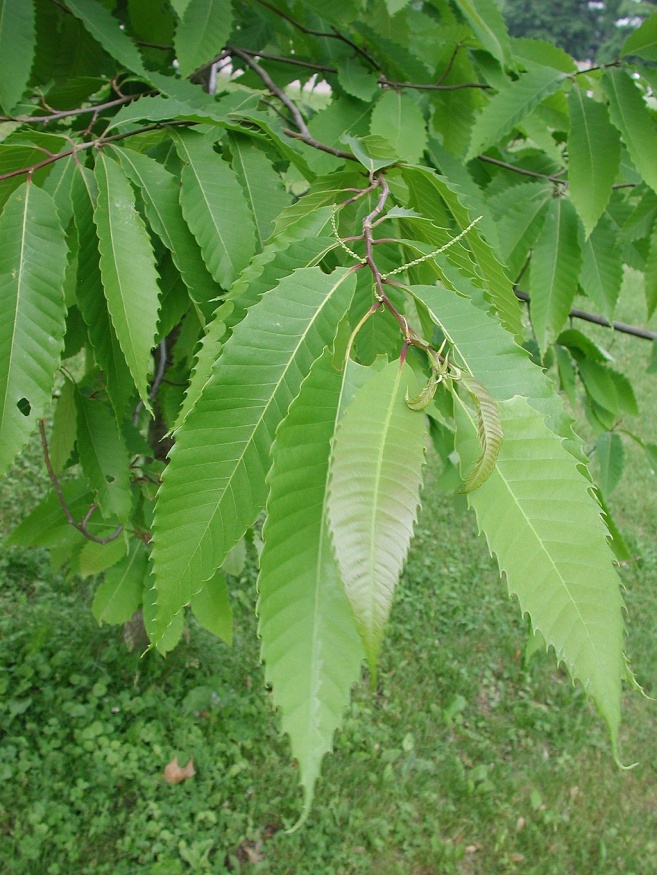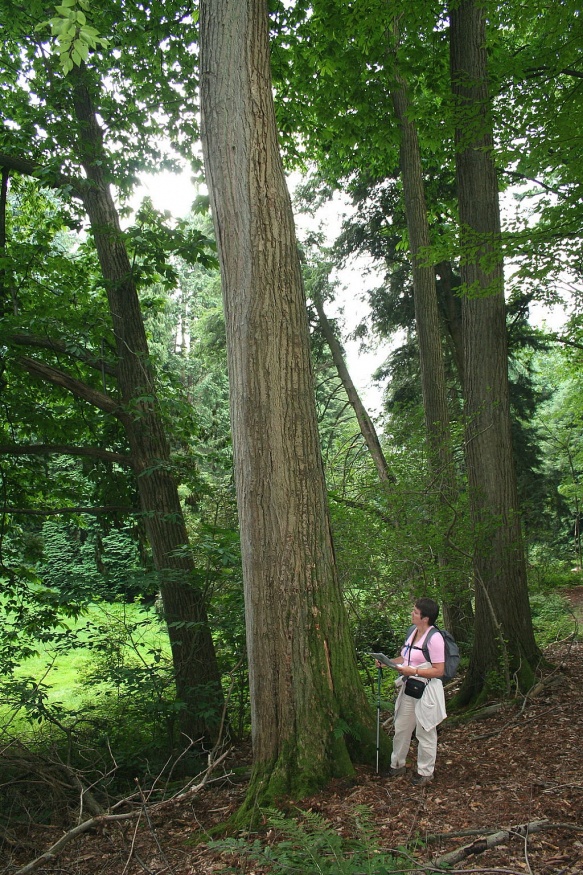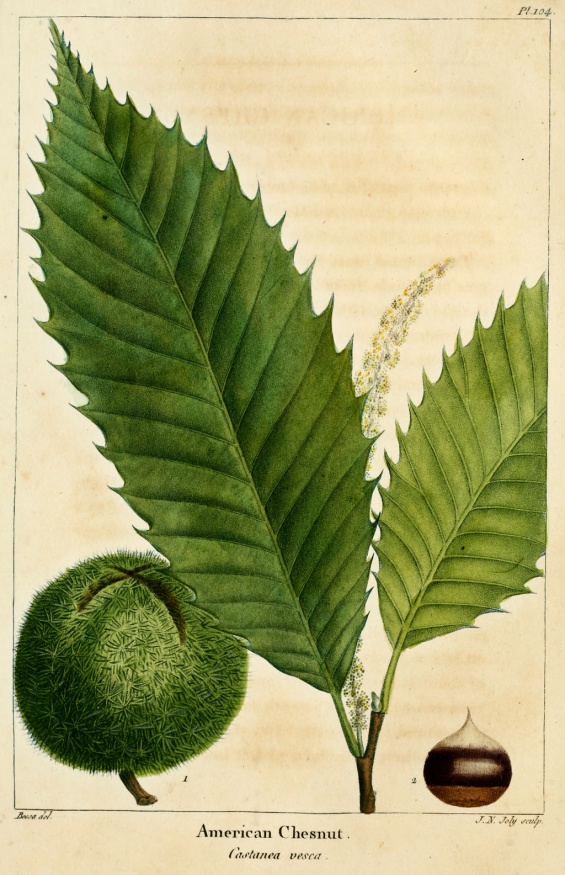American Chestnut

Family: Fagaceae Native to: Eastern North America
Hardy to zone: 4
Eco benefits: valuable wood, edible nuts
Natural habitat: inner forests
Shapes: oblong
Growth rate: medium
Unique attractions: fruit
Diseases: chestnut blight
Soil: well drained

The American Chestnut once lived for hundreds of years, reaching monumental sizes, and was plentiful in Eastern North America. It grew up to 115 feet tall with a trunk diameter well over 10 feet. Its range stretched from Georgia to Michigan in the United Stated and Plentiful in South western Ontario. Now most chestnuts are short-lived, less than 33 feet tall, and grow from resprouting at the base (a stress response). They are now rare and endangered in Canada and the United States.

The decline of the American chestnut started with ink disease of the 1800's, which killed off the southern portion of the tree's range. The Fungal pathogen, chestnut blight (Cryphonectria parasitica) then came from Asia in early 20th century, which turned the tree from plentiful to rare. The disease feeds off of the trunk's cambium, girdling it and eventually killing the tree. Attempts have been made to locate surviving trees and restore them for over 30 years. Now, after decades of breeding, The American Chestnut Foundation is close to producing blight-resistant specimens to release into the wild. A virus is also being developed using Genetic engineering aiming to infect the chestnut blight fungus in an attempt to stop its spread.

Leaves have a distinctive large, bristle-tipped outer edge which resembling saw teeth. Nuts are enclosed in dense, spiky husks. These are edible and were used as stored provisions by the Native Americans. Lumber was very valued and useful as American chestnut is one of the strongest and most decay resistant woods of all North American trees.
References
Lovett, B., PH.D. (2020). Restoring the American Chestnut with a Virus and Biotechnology. Retrieved from https://asm.org/Articles/2020/May/Restoring-the-American-Chestnut-with-a-Virus-and-B
Hodgins, J. Public Affairs Specialist, Northern Research Station, USDA Forest Service in Forestry (2020). What it Takes to Bring Back the Near Mythical American Chestnut Trees. Retrieved from https://www.usda.gov/media/blog/2019/04/29/what-it-takes-bring-back-near-mythical-american-chestnut-trees
Tree Atlas - Ontario. (2019). American chestnut. Retrieved from https://www.ontario.ca/page/american-chestnut
Tree Canada. (n.d.). American chestnut (Castanea dentata). Retrieved from https://treecanada.ca/resources/trees-of-canada/american-chestnut-castanea-dentata/